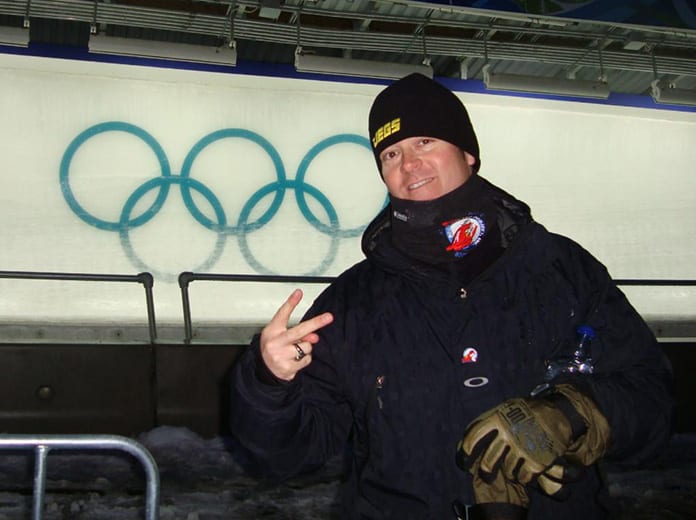
The Bobsled Challenge had actually taken place for two years prior to the NHRA drivers getting involved but despite their lack of experience, an NHRA contingent of Coughlin, Morgan Lucas, J.R. Todd, Melanie Troxel, Shawn Langdon and Bob Vandergriff attacked Mount Van Hoevenberg in Lake Placid, N.Y., with wide-eyed gusto.
“I clearly remember going to the first event and just being an awe of this little town and the history that had been made there,” Coughlin said. “They took us to the ice rink where the ‘Miracle on Ice’ hockey game had taken place, we went by the giant ski jumping structure, the Olympic Village, everything I saw as a kid watching the Winter Games from there in 1980.
“We had two days of training with the actual Olympic team members helping us every step of the way. As we ascended the road to get to the top of the modern bobsled run, which is all elevated in a climate-controlled track, you could see the old run, carved out of the earth, and they told us of the fatalities that had happened over there. That certainly got you to focus.”
Adjusting for their skill level, the participants raced in two-man bobsleds and did not push-start themselves like Olympians do. Instead, each driver and brakeman were already seated in a sled already on the track. An official would then simply let the sled go and gravity would take over.

“The closest thing I could relate to was as a kid in Ohio and running our little Radio Flyer wagons down the hill,” Coughlin said. “They had given us a lot of coaching and we walked the entire length of the track, but I could hear the NASCAR drivers talking about cornering and entry and exit points and I thought, ‘well the only thing I have to offer is quick reaction times.’
“The first day of practice was quite an experience. It comes at you fast when you get up to 60-70 mph and it seemed like I hit everything I could hit on the way down. I thought about it a lot overnight but the next day was even worse. Out of 19 drivers I think I was third slowest.
“Fortunately, on game day things came together. It was bitterly cold and snowing a bit and I was third out. My idea was to not steer it much unless I absolutely had to and I ended up putting together a great run. We whittled the field down from there and I ended up third so I was super happy with that result.”
A positive finish and plenty of time with the athletes spurred Coughlin to participate in two more challenges until the entire project ended. His best finish was second overall, in a bobsled that was fully branded in JEGS famous yellow-and-black livery.
“After that first year I made some notes in my calendar about what I had learned,” Coughlin said. “Lo and behold, about two weeks before the following year’s event, those notes popped up and really kind of got my mind back to thinking about what I needed to do. Overall, it was a wonderful experience. I never crashed so that was good as well.
“The main thing was to help the athletes and get Team USA on top. I was fortunate enough to be a guest of the U.S. Bobsled Federation at the 2010 Winter Games in Vancouver where the men’s four-man team, using a Bo-Dyn bobsled nicknamed ‘Night Train,’ won a gold medal, our country’s first since 1948.
“The next year at the Charlotte 4-Wide Nationals we hosted the four gentlemen who won the gold and NHRA made them Grand Marshalls of the event. We even saluted them with a ‘Night Train’ sticker on my racecar. It was quite an honor to have been a part of it all.”
